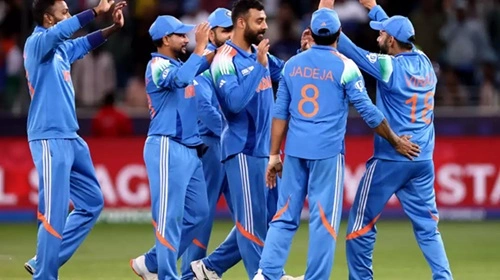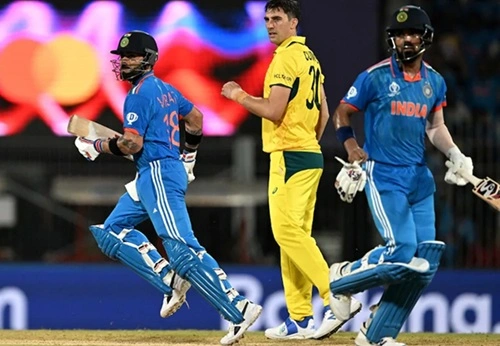The contest between the Australian Men’s Cricket Team and the India National Cricket Team represents one of the most watched, analyzed, and debated rivalries in international cricket. Both teams have a longstanding tradition of excellence, and their confrontations often serve as key moments in global tournaments, bilateral series, and rankings movements. With strong cricketing cultures, significant domestic support, and top-tier talent, their encounters draw attention across traditional broadcasting, digital media, and betting platforms alike.
Historical Background

The rivalry between Australia and India dates back to the late 1940s, when India first toured Australia for a Test series in 1947-48. Over the decades, this competition has evolved from sporadic engagements to regular, high-stakes series. As of the 2020s, the two sides face off frequently across all three major formats — Test matches, One Day Internationals (ODIs), and Twenty20 Internationals (T20Is).
India’s rise as a global cricketing power since the early 2000s has reshaped the balance of competitiveness in this fixture. While Australia historically dominated much of the 20th century, particularly in Tests, India’s emergence has added new dimensions of balance and unpredictability.
These fixtures consistently attract attention from the global sports betting community due to the competitive nature of both teams. Bettors often analyze a wide range of variables — including match results, individual performances, and real-time developments — to inform their decisions. Various platforms provide diverse betting markets, such as predictions on top scorers or leading wicket-takers. For those seeking mobile access to these features, the option for stake app download for android enables users to engage with betting markets directly from their devices.
Recent Form
The competitive balance in recent years has fluctuated. India’s historic Test series win in Australia in 2018-19 was followed by another landmark victory in 2020-21, when a depleted Indian squad won the Border-Gavaskar Trophy 2-1. These performances marked a shift in the traditional power dynamic, particularly in the longest format.
In white-ball cricket, the teams have remained closely matched. Australia has historically held an edge in ICC tournaments, such as their triumph over India in the 2015 ICC Cricket World Cup semifinal. However, India has secured multiple bilateral series victories at home and abroad, including in ODIs and T20Is.
As of recent fixtures, both teams have mixed records, marked by injury challenges, rotation policies, and varying pitch conditions. While India typically performs strongly at home, Australia’s adaptability has made them competitive in subcontinental conditions as well.
Key Players to Watch
India
- Virat Kohli: A central figure in India’s batting lineup, Kohli’s consistency against Australia across formats is well-documented. His aggressive temperament and ability to score under pressure have often defined key matches.
- Jasprit Bumrah: Known for his death-over precision and seam movement, Bumrah remains one of India’s most effective bowlers against Australia, particularly in away conditions.
- Rohit Sharma: With multiple centuries against Australia in limited-overs cricket, Sharma’s role as an opener is critical in setting the tone.
Australia
- Steve Smith: His unorthodox technique and proficiency in Test cricket have made Smith one of India’s most challenging opponents.
- Pat Cummins: As captain and strike bowler, Cummins leads the pace attack with accuracy and sustained speed, particularly effective in both Australian and Indian conditions.
- David Warner: Despite mixed results in India, Warner’s explosive starts in white-ball formats often give Australia momentum.
Match Preview (General Overview)
When Australia and India meet, the venue plays a significant role in match strategy. Australian grounds typically offer bounce and pace, benefitting fast bowlers and aggressive batsmen. In contrast, Indian pitches often favor spin and demand a more nuanced approach to batting.
Team selection is generally influenced by these conditions. For example, India might opt for a dual-spin attack with players like Ravindra Jadeja and R. Ashwin, while Australia could rely more heavily on seamers such as Josh Hazlewood or Mitchell Starc.
Toss decisions also matter. In subcontinental matches, chasing under lights can be more difficult due to dew and pitch deterioration, whereas in Australia, early movement with the new ball might prompt captains to bowl first.
Strengths and Weaknesses
India
Strengths:
- Depth in batting with flexibility from the top to the lower middle order.
- Skilled spinners and reverse-swing bowlers suited for home conditions.
- Strong record in bilateral series, especially at home.
Weaknesses:
- Inconsistent middle-order performance in overseas Tests.
- Injury-prone fast-bowling unit.
- Struggles with bounce on Australian wickets.
Australia
Strengths:
- World-class pace attack with variety in line and length.
- Long-standing familiarity with ICC tournament conditions.
- Strong fielding standards and athleticism.
Weaknesses:
- Limited success in subcontinental conditions, particularly against quality spin.
- Inexperienced spinners in high-pressure games.
- Dependence on top-order performance in batting.
Notable Past Encounters
2001 Kolkata Test (Eden Gardens)
India overturned a follow-on to defeat Australia, with VVS Laxman and Rahul Dravid putting together a historic partnership.
2008 Sydney Test
This match was marred by controversy over umpiring decisions and on-field tensions. It significantly influenced diplomatic and cricketing relations for a period.
2015 World Cup Semi-Final
Australia defeated India to enter the final, with Steve Smith playing a pivotal role.
2021 Gabba Test
India secured a series victory with a record chase at the Gabba, breaking Australia’s unbeaten streak at the venue since 1988.
Betting Interest and Market Dynamics
Matches between these two sides are focal points in the sports betting ecosystem. The scale of global viewership, combined with the unpredictable nature of outcomes, makes them attractive events for market operators and participants.
Bets are typically placed on match winners, individual scores, wickets taken, boundaries hit, and player-of-the-match honors. Odds are often influenced by team news, pitch reports, weather conditions, and historical data. Real-time betting has also grown due to technological advances in streaming and mobile platforms.
Betting data is frequently analyzed by statisticians and algorithmic models to detect value across various markets. However, variability in player form and situational dynamics ensures that betting on these fixtures remains highly competitive and analytically demanding.
Predictions and Expectations
Predictions in this rivalry often diverge significantly due to the small margins between teams. Factors such as squad rotation, tactical planning, pitch preparation, and in-game decision-making all contribute to match outcomes.
The importance of form, particularly for top-order batsmen and opening bowlers, cannot be overstated. Conditions heavily impact batting and bowling plans, and adaptability often proves to be the difference-maker.
While forecasts are popular among fans, journalists, and analysts alike, historical unpredictability ensures that no single narrative dominates expectations.

Conclusion
The Australia–India men’s cricket rivalry encompasses tradition, competitive excellence, and high-performance sport. With both teams regularly producing top-tier players and engaging in close contests, their encounters remain a cornerstone of international cricket.
Whether in the context of ICC events, bilateral series, or future World Test Championship matches, the dynamics between these two cricketing nations are complex and subject to continuous evolution. From historical legacies to current form, each match offers data, drama, and context for the global cricket audience.

